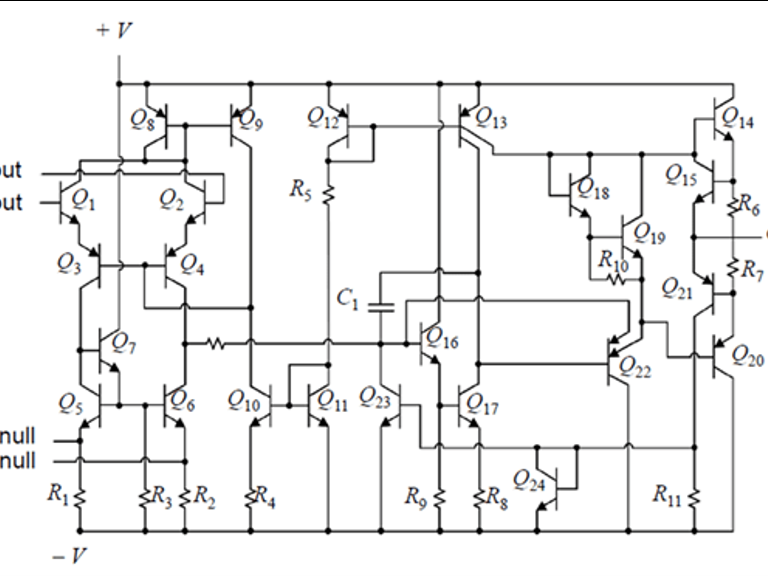
‘Design is what industry demands of our engineering graduates’
Science fiction writer Arthur C. Clarke once observed that “any technology sufficiently advanced is indistinguishable from magic”. If we teach electronics engineering students only to analyse circuits without showing them how these circuits were conceived, we risk turning their education into something akin to teaching magic tricks rather than scientific principles.
Moreover, electronics engineering education that focuses solely on circuit analysis leaves graduates unprepared for design challenges in industry. As an electronics educator, I’ve long been troubled by this fundamental disconnect. Design is precisely what industry demands of our graduates.
By restructuring courses around meaningful design projects, we can better prepare students for real-world engineering problems and address critical skills shortages.
The analysis-design gap in engineering education
More than 20 years ago, I sat in my own analog electronics class watching my professor explain complex circuit diagrams such as the 741 operational amplifier (pictured above) with statements like: “When this point goes up, that point goes down, which pulls current through here.” These sessions filled me with awe about how a few transistors could transform into ubiquitous components that seemingly worked by magic.
- Using design-thinking to train the next generation of engineers
- Steps to adapt engineering education to changing skills demands
- Nurturing advanced problem-solving skills with integrated projects
Years later, as an instructor myself, I realised we were perpetuating a problematic approach. This realisation became more urgent around 2020, when global semiconductor shortages highlighted an acute need for qualified integrated circuit designers. Despite comprehensive electrical engineering degrees, our students weren’t fully prepared for these roles because they lacked experience in the creative design process.
Reimagining electronics education through design challenges
To address this gap, I shifted my second-year analog electronics course from rote analysis to creative problem-solving, applying principles of design thinking to the curriculum itself. Instead of isolated, prescriptive lab exercises, the course now revolves around a series of interconnected design challenges that build towards a meaningful product: an analog stethoscope for electronically amplifying heart sounds (see Figure 1).
This project is a powerful exercise in authentic learning. It moves students beyond abstract schematics to a tangible, real-world task with a clear purpose. The new approach consists of three progressive design problems:
- a microphone preamplifier using op-amps
- a two-stage volume-unit meter with diode rectifiers
- a push-pull audio power amplifier using transistors.
To ensure individual accountability and prevent solution sharing, I personalised each student’s specifications using digits from their matriculation number – a simple technique that creates thousands of unique design problems while maintaining consistent learning objectives.
Supporting the design process with industry-standard tools
Introducing design challenges isn’t enough, though. Students need appropriate tools to test their ideas. I incorporated LTSpice, an industry-standard circuit simulator, through targeted tutorial sessions. This crucial step creates a safe environment for productive failure. Students can experiment with their designs, see what doesn’t work and refine their ideas in a low-stakes virtual environment. This iterative process of simulating, failing, and trying again is where some of the most profound learning occurs, building confidence long before a physical prototype is made.
When simulation results match laboratory measurements, students experience a powerful confirmation of their theoretical understanding – bridging the gap between abstract concepts and physical reality.
The culmination of these design challenges provides immediate, visceral feedback on students’ success. When they place the microphone against their neck and hear their own heartbeat through their earpiece while simultaneously seeing the waveform on an oscilloscope, theory and practice unite in a moment of genuine understanding.

This stands in stark contrast to traditional assessments, where students demonstrate that they’ve followed instructions correctly. The excitement I see when students create working circuits from their own designs confirms what I’ve long suspected: engineering education is at its most powerful when it empowers students not just to understand technology but to create it.
Practical steps for implementing design-centred teaching
Based on my experience, here are concrete steps for incorporating design-centred teaching in your own engineering courses:
- Identify meaningful end products that incorporate multiple course concepts and provide clear evidence of success when working properly.
- Break down complex projects into modular challenges that build progressively towards the final product.
- Personalise specifications to ensure individual accountability while maintaining consistent learning objectives.
- Introduce appropriate simulation tools early and provide structured opportunities to develop proficiency.
- Connect theoretical concepts explicitly to design decisions students must make.
- Balance guidance with autonomy, providing sufficient support while leaving room for creative problem-solving.
- Create authentic assessment based on design functionality and understanding rather than adherence to procedures.
Engineering education for the real world
This design-centred approach represents a fundamental recalibration of how we prepare engineering students for their careers. By shifting focus from analysis to design, we not only better align education with industry needs but also ignite students’ creativity and problem-solving capabilities.
When I first introduced this approach, I wondered if students would find the design challenges too difficult. Instead, they demonstrated that when given meaningful problems to solve, students will exceed our expectations. The pride they take in their working stethoscopes – devices they designed rather than merely assembled – speaks volumes about the power of design-centred learning.
Ji-Jon Sit is a senior lecturer in the School of Electrical and Electronic Engineering at Nanyang Technological University, Singapore.
This is an edited version of the blog post “Teaching circuit design, not just analysis: how I transformed my electronics course”, first published by the NTU Institute for Pedagogical Innovation, Research and Excellence.
If you would like advice and insight from academics and university staff delivered direct to your inbox each week, sign up for the Campus newsletter.



